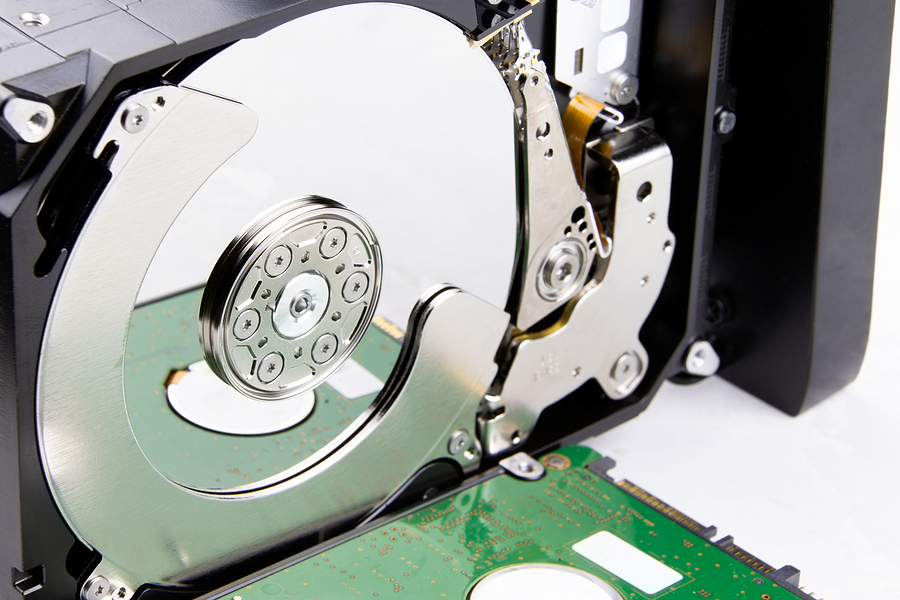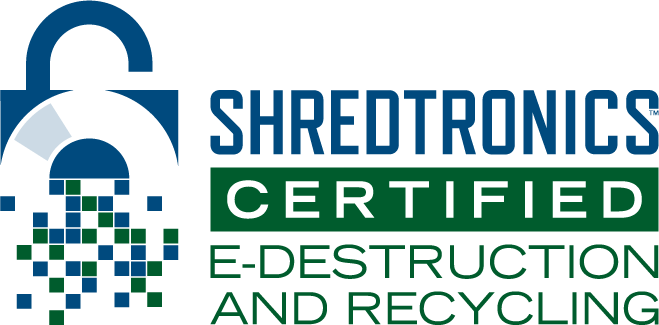
Best Practices for Hard Drive Destruction
A hard drive is a high-capacity storage device that stores digital content on your computer. Every computer contains an internal hard drive, but external hard drives are often used as well. Over time, your hard drives will no longer work due to age, heat, power issues, and more. When it comes time to replace your computer and hard drives, you will want to consider the best method of disposal.
Professional hard drive destruction is the best disposal method when considering safety, compliance, and sustainability. Because nearly all business and personal information is now stored digitally, proper disposal may help you avoid a data breach. Data breaches expose confidential communications, financial transactions, and business secrets. Preventing leaks of information will save money, stress, and damage to your reputation.
Types of Service Options
Hard drive destruction refers to the physical demolition of the magnetic disks and platters inside the hard drive casing. The platters are the physical location of data stored within your device. Destroying the hard drive platters can be done in a variety of ways including scratching, hammering, crushing, cutting, and heating.
Below we will discuss the types of hard drive destruction service options. Each option is effective, but some are more reliable than others. Investing in proper hard drive destruction is an excellent business practice that will protect you and your customers.
Degaussing
Degaussing uses a magnetic field to scramble the information stored on your hard drive. The drive’s magnetic properties are altered, changing the direction of the drive and erasing data. Degaussing cannot be completed using a regular magnet but requires a powerful device called a degausser. The machine creates a large magnetic force strong enough to destroy the hard drive.
While degaussing is mostly effective, some of your original information may remain intact. It is possible that data recovery experts could have the tools and talent required to recover your data. Degaussing is also an extensive process that may increase your costs and take more time to complete.
Melting
Melting hard drives is an effective destruction method, but it is dangerous and damaging to the environment. The process uses hydrochloric and nitric acids to melt the hard drive platters and casings. Only trained professionals with the appropriate protective gear should handle acids to avoid burns and other injuries. Chemicals should be properly disposed of to prevent environmental damage.
Please note that acid is corrosive to the eyes, skin, and mucous membranes. Improper handling can lead to coughing, inflammation, ulceration, and burns. Hydrochloric acid can also negatively affect ecosystems by increasing the acidity in the soil, making it difficult for some organisms to grow.
Drilling
Drilling is a simplistic destruction method that uses a drill, hammer, or nail gun to drive holes through the platters of your hard drive. You will need to make sure that the platter is completely penetrated with each shot or valuable data can be left behind.
Though this is an easy and inexpensive method, it is not recommended. You can be easily injured and your hard drive will inevitably end up polluting the environment in a landfill.
Disintegration
Disintegration is a method that uses a machine called a disintegrator to cut your hard drives into smaller pieces. The machine uses a conveyor system and knife to ensure that the pieces cannot be reassembled. This method is popular for highly confidential information but does come with some disadvantages.
Disintegrators are not suitable for use in an office environment. They need special electrical requirements and proper ventilation. To install a disintegrator, you will need federal and state approval.
Shredding
Shredding is one of the most effective destruction methods for hard drives. A specialized shredder uses 40,000 pounds of force to cut your drives into tiny pieces. Fragmenting your hard drive renders it useless and completely destroys your data.
Shredding is an accessible and affordable destruction method. It often includes recycling, helping your company maintain sustainable efforts, and reducing your carbon footprint.
Best Practices
Hard drive destruction should be regularly practiced by businesses and individuals that handle sensitive information. It is best practice to physically dispose of data, restricting unauthorized access and preventing leaks of information. When your hard drives are properly destroyed, your data remains safe and protected.
Professional Destruction and Safety
Professional destruction ensures that the proper equipment and skill are used to isolate the hard drive and destroy the platters. Amateurs may not be able to correctly access or erase all information contained within the drive. Dismantling electronics can release toxic particles that damage human health and the environment. To guarantee safe handling and thorough destruction, hard drives should always be destroyed by a professional.
Security and Compliance
Secure hard drive destruction will include a chain of custody and proof of destruction. Chain of custody is a documented path created by recording each touchpoint from collection to disposal. The chronological trail accounts for the custody, control, and transfer of your drives throughout the destruction process.
Proof of destruction is verified by a certificate of destruction. The certificate proves that your data is no longer at risk and that your organization has complied with data privacy laws. You should save this document for your records to be used in the event of legal proceedings or an audit.
Destroy Your Hard Drives with Shred Nations Today
Shred Nations partners with hard drive destruction experts across the country to make it easy to find services near you. We have served businesses in every industry and of all sizes. Give us a call at (800) 747-3365 or fill out the form to connect with providers in your area. We will send you free, no-obligation price quotes within minutes.











